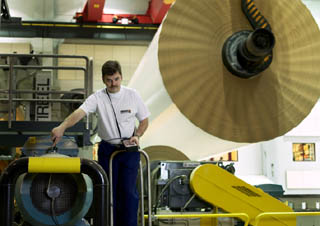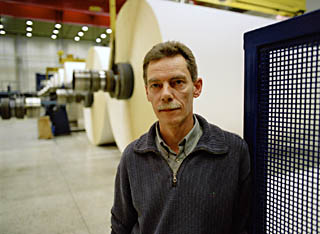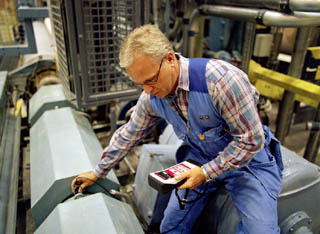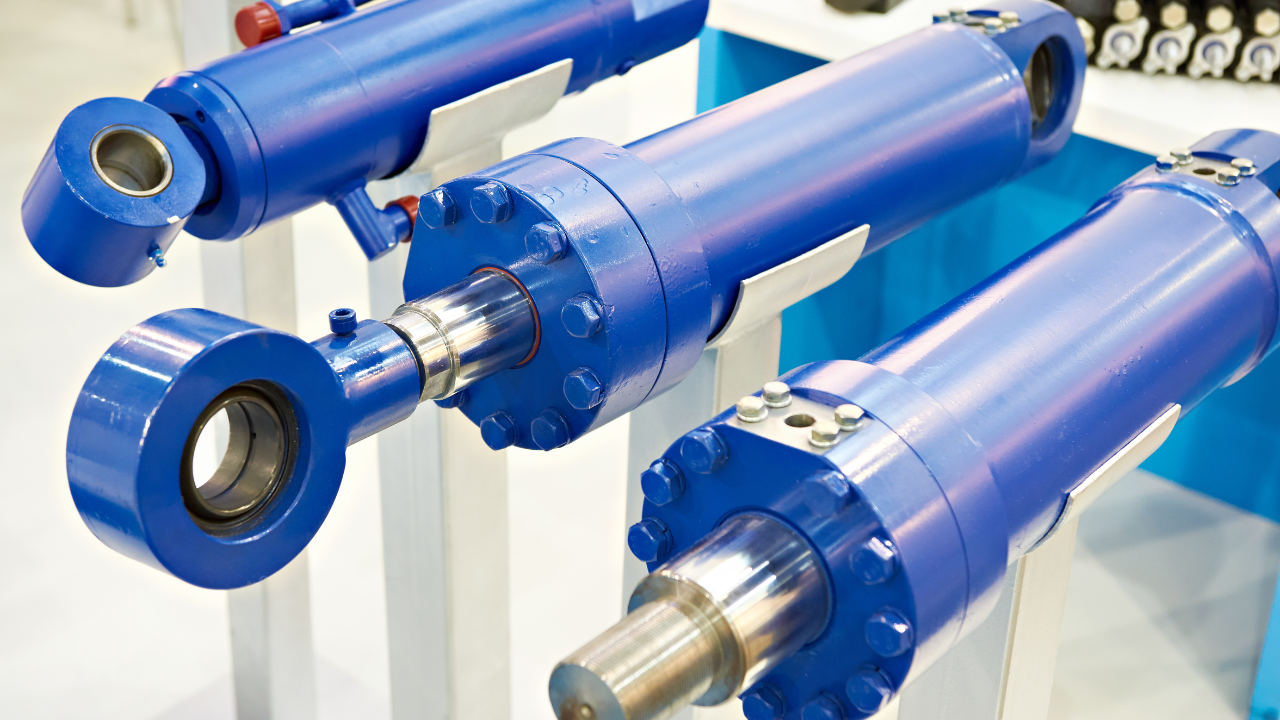Fast, Reliable Measurements Give Us An Effective Way of Planning Preventive Maintenance In Advance
SPM Instrument
“This equipment has given us completely new opportunities to plan maintenance activities in advance. This has meant that we’ve been able to minimize the number of breakdowns, thus increasing our profits.”

Olle Regnell is a preventive maintenance technician at the Skoghall Mill, a company within the StoraEnso group. In 1993, the company installed extensive on-line equipment for the shock pulse measuring of bearings on Board Machine No. 7 (BM 7). Thanks to this investment, today they can measure,with a focus on wrapping, drying and pressing quantities in the board machine, 1,050 items of stock every 24 hours. Earlier it took between four and six weeks to do the same job!” Being able to measure quickly and accurately has meant that we can see rising trends and plan things so that replacements can be introduced during scheduled interruptions,” says Olle Regnell.
“Being able to measure quickly and accurately has meant that we can see rising trends and plan things so that replacements can be introduced during scheduled interruptions,” says Olle Regnell, preventive maintenance technician.
“After installation of the SPM system, breakdowns have been very rare, which has made it possible to avoid production losses worth millions.”
Millions of Swedish crowns
What effect has being able to reduce the number of breakdowns had on the company economically? “It’s always difficult to say to the penny how much we could have saved if we are able to act before a breakdown happens. But we are really talking about major amounts and the measuring system has more than paid for itself several times over.”
A look in the rear-view mirror tells us that before 1993, the mill suffered three or four breakdowns, caused by stock damage, every year. After installation of the SPM system, breakdowns have been very rare, which has made it possible to avoid production losses worth millions.
A guide roll bearing takes five or six hours to replace and if we multiply that by 150,000 Swedish crowns an hour, which is what the Skoghall Mill loses in revenue when BM 7 is idle, we arrive at “major sums”, as Olle puts it.
Down to 100 hours!
In addition to this investment, which is reducing what is traditionally regarded as pure maintenance costs, it has also opened the door to more efficient use of capital. “We don’t have to keep as many spare parts in stock. In fact, we can even allow our suppliers to take over some storage of stocks,” says Göran Regnell, Manager of Technique, a unit whose 360 employees work with plant and IT, as well as maintenance.

“It’s important that those of us who work with maintenance are able to present our opinions early in the design and purchasing phases,” says Göran Regnell. Indicating that studies showing that some 60 per cent of the incidents that have caused breakdowns were directly related to design and purchasing.
The reduction in the number of breakdowns has made it possible for the company to reduce the number of unscheduled interruptions at BM 7, from 250 to 150-200 hours per year, a level that has held over the past four years. “We’ve switched from corrective to preventive maintenance and got good results. Now we’re aiming to press that figure down to 100 hours,” says Göran Regnell.
Integrating operational reliability
To arrive at that goal, the company is consciously working to integrate operational reliability into the production organisation. “Our maintenance organisation is set up to support the main process. Thus it makes sense for us to be located close to each other. It is also important that those of us who work with maintenance get to present our opinions already in the design and purchasing phases,” says Göran Regnell, indicating studies showing that some 60 per cent of the incidents that have caused breakdowns were directly related to design and purchasing.
Raising the ceiling on OEE
When production is under way, it’s up to the maintenance organisation to raise the OEE, Overall Equipment Efficiency, in other words, to exploit the mill to the maximum.
The OEE model has been in use at the Skoghall Mill since the mid-’90s, and losses in time, speed and quality have been reduced by taking various measures. “Committed, knowledgeable staff and RAPS, a system for maintenance, are two important reasons for us coming a good distance along the way,” says Göran Regnell.
Nowadays, staff aren’t just planning and carrying out maintenance assignments. They register the fault itself, when it occurred, what type of fault it is, what measures have been taken and how long it took, etc. Over 90 per cent of employees’ time is reported in RAPS. “At first, a lot of people thought registration was just bureaucracy, but today they accept it wholeheartedly. The reason for this that they can see how much of an advantage registration gives them when they’re planning forthcoming assignments,” says Göran Regnell.
“We can see rising trends and plan things so that replacements can be introduced during scheduled interruptions”
The group has the right competence

The records stored in RAPS also give the Skoghall Mill very good input data for use in evaluating and analysing maintenance measures, and for carrying out improvements.”Thanks to the information RAPS gives us, we can concentrate our efforts on the problems that cause the greatest financial losses. We can even see exactly what types of competence are needed in the different improvement groups that we put together to find solutions to maintenance-related problems,” says Göran Regnell.
“This effective SPM measuring equipment is also easy to use,” says Lennart Wallenius, preventive maintenance technician at Stora Enso.
Related Articles





